| LAPAROSCOPIC SURGERY |
Austmangal surgical Hospital offers patients cutting-edge latest Advance Laparoscopic surgical solutions. |
| |
What Operations Can We Do Laparoscopically?
 LAPAROSCOPIC CHOLECYSTECTOMV LAPAROSCOPIC CHOLECYSTECTOMV
 LAPAROSCOPIC APPENDECTOMY LAPAROSCOPIC APPENDECTOMY
 LAPAROSCOPIC HEMICOLECTOMY LAPAROSCOPIC HEMICOLECTOMY
 LAPAROSCOPIC HERNIA REPAIR LAPAROSCOPIC HERNIA REPAIR
 KEY HOLE TRAUMA SURGERY KEY HOLE TRAUMA SURGERY
 LAPAROSCOPIC HYSTERECCTOMY LAPAROSCOPIC HYSTERECCTOMY
 LAPAROSCOPIC OVARIAN CYST REMOVAL LAPAROSCOPIC OVARIAN CYST REMOVAL
 SINGLE-PORT LAPAROSCOPIC SURGERY SINGLE-PORT LAPAROSCOPIC SURGERY
|
 LAPAROSCOPIC COLON SURGERY LAPAROSCOPIC COLON SURGERY
 KEY HOLE ORTHOPAEDIC SURGERY KEY HOLE ORTHOPAEDIC SURGERY
 LAPAROSCOPIC NEPHRECTOMY LAPAROSCOPIC NEPHRECTOMY
 LAPAROSCOPIC ADHESOLYSIS LAPAROSCOPIC ADHESOLYSIS
 LAPAROSCOPIC VERICOSE VEIN LIGATION LAPAROSCOPIC VERICOSE VEIN LIGATION
 LAPAROSCOPIC DUODENAL PERFORATION LAPAROSCOPIC DUODENAL PERFORATION
 LAPAROSCOPIC ADSEOLYSIS LAPAROSCOPIC ADSEOLYSIS |
| |
What is a laparoscope and how the surgery is performed ?
A laparoscope is a small, thin tube that is put into your body through a tiny cut made just below your navel. Your surgeon can then see the organ on a television screen and do the surgery with tools inserted in three other small cuts made in the abdomen. Your diseased organ is then taken out through one of the incisions.
Are there any benefits of laparoscopic surgery compared with open surgery?
With laparoscopic surgery, you may return to work sooner, have less pain after surgery and have a shorter hospital stay and a shorter recovery time. Surgery with a laparoscope does not require that the muscles of your abdomen be cut, as they are in open surgery. The incision is much smaller, which makes recovery go quicker. With laparoscopic surgery, you probably will only have to stay in the hospital overnight. With open surgery , you would have to stay in the hospital for about five days. Because the incisions are smaller with laparoscopic surgery, there isn't as much pain after this operation as after open surgery.
What is Laparoscopic Cholecystectomy?
The surgery to remove the gallbladder is called a cholecystectomy (chol-e-cys-tec-to-my). The gallbladder is removed through a 5 to 8 inch long incision or cut in your abdomen. The cut is made just below your ribs on the right side and goes to just below your waist. This is called open cholecystectomy.
A less invasive way to remove the gallbladder is called Multi port laparoscopic cholecystectomy. This surgery uses a laparoscope to remove the gallbladder. It is performed through several small incisions rather than through one large incision.
What is Single-Port Surgery?
Single-port surgery is surgery that is literally performed through a single port - or incision - in a patient's navel (belly button).
Single-port surgery is a form of minimally invasive - laparoscopic - surgery. In traditional laparoscopic surgery a telescopic rod connected to a video camera, or laparoscope, is inserted through a small incision in the abdomen. Three to five additional small incisions are made and used as "ports" in which to insert instruments. Because laparoscopic surgery usually results in fewer complications and a more rapid recovery, patients often can return home the same day.
What are the Advantages and Disadvantages of Single-Port Surgery?
Because it uses only one port, single-port surgery leaves little to no scarring and may reduce complications that commonly occur after traditional open and even traditional laparoscopic abdominal surgery. Patients are reporting less discomfort and faster recovery compared with those undergoing traditional laparoscopy.
For surgeons, the single-port approach is more challenging than traditional laparoscopy because the surgeon has less freedom of movement with all instruments using the same entry point. Specially designed flexible instruments help to overcome that limitation.
Who is a Candidate for Single-Port Surgery?
For certain procedures, patients considered for laparoscopic surgery also may be candidates for a single-port procedure. Patients may not be eligible if they have had multiple major abdominal surgeries or are morbidly obese, as both conditions limit visibility and movement inside the abdomen.
|
| |
|

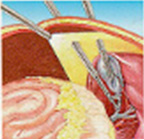
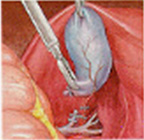
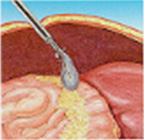
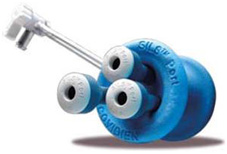
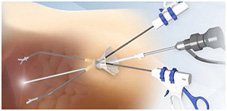
|
|
| |
| |
|
| |
|
| |
|
|
|
| Enter your weight and height using metric measures. Select "Calculate BMI" and your BMI will appear below. |
|
| |
| |
• Under Weight = <18.5
• Normal Weight = 18.5–24.9
• Overweight = 25–29.9
• Obesity = BMI 30 or Greater
|
|
|
|
|
Dr. Manoj N Agrawal |
MBBS, MS, FAIS
Surgical Gastroenterologist
Part Time Gastro Surgeon
Department of Gastro Intestinal and Hepatobilliary surgery and liver transplant.
Institute of Kidney diseases and Research Center,
Civil Hospital Campus, Ahmedabad, Gujarat |
| |
Dr. Ruchita M Agrawal |
BDS, Dental Surgeon |
| |
"Austmangal Surgical Hospital " |
Austmangal Complex , Nr. Rajasthan Hospital , |
Sahibaug , Ahmedabad -4, Gujarat - India |
|
Phone :- 079-22868909 , 65121206 |
Fax :- 079 22868906 |
Email :- drmanoj@austmangal.com |
|
|
|
|
|
|